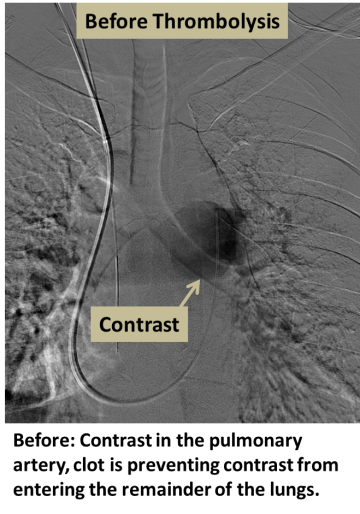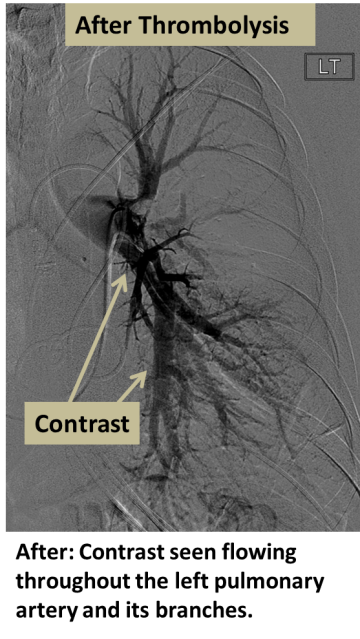Arterial Thrombolysis
Find your care
Our board-certified physicians diagnose and treat many vascular conditions. Call 310-481-7545 to learn more about interventional radiology services.
Treatment for:
Acute occlusion of an artery by clot
Why it’s done:
Clot can form locally in an artery and block it (thrombosis), or clot can form elsewhere in the body and be carried in the bloodstream until it lodges in a distant artery (embolism). The blockage by the clot prevents normal blood flow to the organ served by the artery, which can result in ischemia (tissue starvation) or necrosis (tissue death)
How it’s done:
An artery, usually the femoral artery, is accessed with a small puncture, and X-rays are used to navigate a catheter into the occluded artery. A specialized infusion catheter is positioned within or across the clot, and a powerful clot-busting medication (thrombolysis) is dripped into the clot to dissolve it. Follow-up angiography is typically performed in 12-24 hours to determine the success of thrombolysis.
Level of anesthesia:
Conscious sedation
Risks:
Bleeding, infection, damage to the artery wall (rupture or dissection). Clot or plaque can break off during the intervention and pass down toward the foot, limiting flow (distal embolization). In most cases, these complications can be recognized and treated during the procedure. Rarely, open surgery or even amputation may be required.
Post-procedure:
During thrombolysis, the patient is on bed rest in a monitored unit, with regular checks of vital signs and puncture sites. Once thrombolysis is complete, the arterial puncture site is closed and the patient must lie flat for two to six hours. Anticoagulation is often instituted to help keep the treated arteries open.
Follow-up:
Doppler ultrasound and clinic visit is typically performed several weeks after the procedure to confirm that the artery remains open and that symptoms have improved. Continued follow-up depends on the individual case.


For More Information:
For more information or to schedule an appointment with one of our IR physicians, please call 310-481-7545.